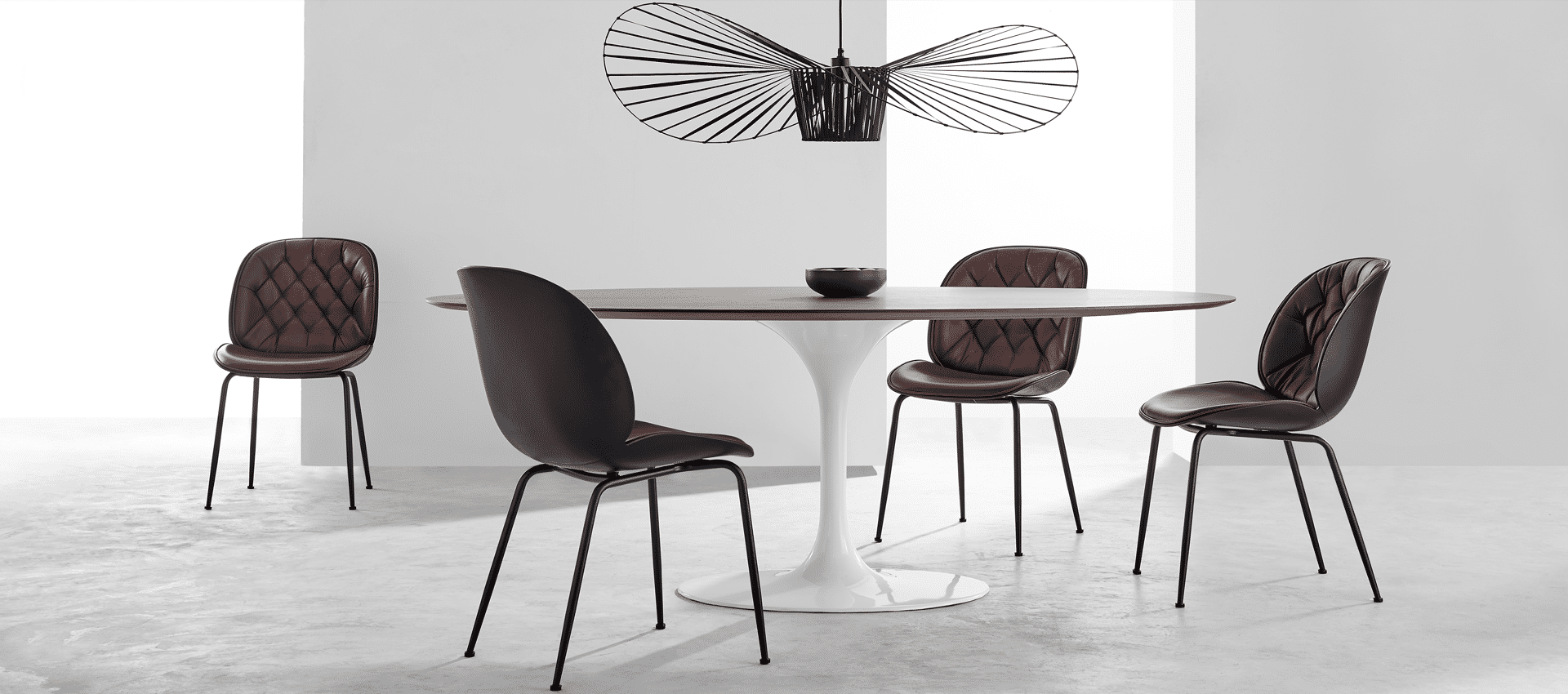Historical Context and Popularity of Beetle Style Dining Chairs

The beetle chair, with its distinctive organic form and surprisingly sturdy construction, holds a fascinating place in design history. Its enduring appeal stems from a confluence of factors: its elegant simplicity, its surprising comfort, and its ability to seamlessly integrate into diverse interior styles, from mid-century modern to contemporary minimalist settings. Understanding its historical trajectory illuminates its continued relevance.
The origins of the beetle chair design are somewhat shrouded in mystery, a captivating enigma mirroring the chair’s own subtly intriguing form. While a precise inventor remains elusive, its popularity peaked during the mid-20th century, coinciding with the rise of modernism and the increasing demand for functional yet aesthetically pleasing furniture. The design’s popularity is often linked to the post-war economic boom and a shift towards mass-produced, affordable, yet stylish home furnishings. The organic, almost insect-like curves of the chair’s back and seat, giving it its namesake, are evocative of the biomorphic forms popularized by the Art Nouveau movement earlier in the century, but its clean lines and streamlined silhouette firmly place it within the modernist aesthetic.
Design Evolution of the Beetle Chair, Beetle style dining chair
The evolution of the beetle chair design is characterized by subtle yet significant shifts reflecting broader design trends and technological advancements. The early iterations often featured simpler curves and a more pronounced emphasis on functionality. Later designs incorporated more refined curves and a greater attention to ergonomic details, enhancing both comfort and aesthetic appeal. The use of materials also played a significant role; early versions often used molded plywood, while later iterations incorporated various materials, including plastics and laminates, to broaden the range of colors and finishes.
- Early 1900s – 1950s: The initial designs emerged, characterized by simple, flowing curves and often constructed from molded plywood. The focus was on functionality and affordability, aligning with the post-war desire for mass-produced furniture. Color palettes were primarily muted and natural, reflecting a preference for understated elegance.
- Mid-1950s – 1970s: The design gained wider popularity, with manufacturers experimenting with different materials and finishes. The introduction of plastics and laminates allowed for a greater variety of colors and textures. This era saw a slight increase in ornamentation, with some designs incorporating subtle details to enhance the chair’s visual appeal.
- Late 1970s – Present: The beetle chair experienced a period of relative decline, only to be revived in recent years. Contemporary designs often retain the original form but incorporate modern materials and manufacturing techniques, resulting in increased durability and a wider range of customization options. The focus has shifted towards sustainable and eco-friendly materials, reflecting a growing awareness of environmental concerns.
Reasons for Resurgence in Popularity
The renewed interest in beetle chairs in recent years can be attributed to several factors. The chair’s timeless design transcends fleeting trends, making it a versatile piece suitable for various interior styles. Furthermore, the emphasis on sustainable and ethically sourced materials resonates with contemporary consumers’ values. The inherent simplicity of the design, combined with its surprising comfort, makes it an appealing option for those seeking both functionality and aesthetic appeal. The chair’s affordability relative to other designer pieces also contributes to its popularity.
Cultural Significance of the Beetle Chair
The beetle chair’s cultural significance lies in its ability to embody the spirit of its time while maintaining a timeless quality. Its association with mid-century modernism connects it to a broader cultural movement that valued functionality, simplicity, and clean lines. The chair’s resurgence reflects a broader trend towards embracing vintage and retro design elements, demonstrating a renewed appreciation for classic forms and craftsmanship. Its enduring popularity signifies a persistent desire for furniture that is both beautiful and practical, a testament to the power of enduring design.
